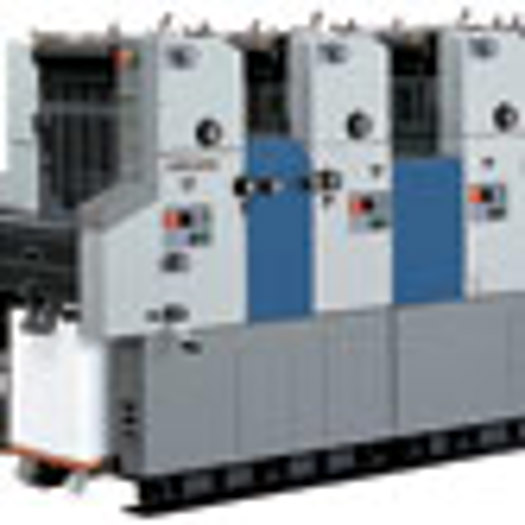At Drupa 2004, Presstek customers were given a glimpse of the blueprint for the manufacturer's new environmentally friendly chemistry-free platesetter, the Vector TX52. However, it wasn't until late 2005 that the machine was launched, with European shipping beginning in early 2006.
According to Presstek, despite the lengthy gestation period, smaller printers found that it was well worth the wait.
"It was very well received when we previewed it," says Ray Hillhouse, sales and marketing director at Presstek Europe. "Our customers were looking for an environmental solution to plate production."
The TX52 was just that. The 52cm thermal, chemistry-free, metal platesetter achieved a production speed of 16 plates per hour and, according to the manufacturer, it was ideal for SMEs producing short-run, high-quality work.
It was designed to work alongside the manufacturer's Freedom Pro chemistry-free plates and, because the plates could be handled under normal daylight conditions, there was no need for safelight requirements.
Cost a key issue
"For the smaller printer, the cost of chemistry was a big issue," explains Hillhouse. Most small printers didn't want the hassle of buying and disposing of chemistry and, for those that did not use a platesetter everyday, it saved waste in terms of unused chemistry going beyond its use by date.
Hillhouse says the issue of space was also a problem the manufacturer wanted to address. "It is a compact design so it can fit neatly into a room - the same size as a desk," he adds.
The TX52 boasted an in-built plate washer, so it worked by plates being inserted at the front, imaged and water washed inside the unit, before being discharged as a completed plate.
At Drupa 2008, the TX52 model was replaced by the Vector FL52. The key difference between the two machines was the drum construction and wash tank design.
The drum was enhanced so that it could cover a wider range of plate sizes that were under 52cm. "It was a US
decision as they do a lot of small portrait design work," explains Hillhouse. Improvements on the wash also meant it could handle a bigger capacity.
Production on the TX52 eventually stopped earlier this year. Optional extras were mainly focused around the machine's Harlequin-based RIP. Printers could choose to add pre-flighting, trapping and imposition software as optional extras or Presstek's Momentum Workflow, depending on the level of automation needed.
Presstek guarantees to carry parts for a minimum of seven years - both the TX52 and FL52 share common parts so getting supply will not prove difficult, according to Hillhouse. It also occasionally takes back and sells old models.
"We take any of our machines back and sell them reconditioned or remanufactured," says Hillhouse. However, he warns: "They are still fairly new, so we don't see very many."
Depending on the condition of the machine and the software supplied, a secondhand machine should cost around £25,000. A new FL52 is priced from £35,000. Hillhouse advises that, if you are looking for a secondhand model, you should look for general cleanliness of the unit - if it has been well treated, it will give a good performance.
Specifications
Plate width 330-340mm and 510-525mm
Max imaging area 530x487mm
Plate thickness 0.15mm and 0.20mm
Max resolution 4,200dpi
Screening 175 line screen
Speed 16 plates an hour
Weight 454kgs
Footprint 1,470x740mm
Price
New FL52 from £35,000
Used TX52 around £25,000
What to look for
General cleanliness









